
Who knew that 2016 was going to turn out the way it did…but I’m posting something I wrote in March 2015, about Paris under siege in 1916 – and then re-posted after the horror of Bataclan. I’ve just been talking about Lili Boulanger’s final months – a crazy mix of opening nights at the Trocadero as the bombs fall from the sky, of ever-increasing laudanum and a desperate determination to complete her work.
Here’s the work she finished, the seriously (chilling or comforting?) Pie Jesu.
******
It’s a bit cheeky to start with an image of La Marche des Fiertes on 29 June 2013, since I’m considering a musical Marche Gaie, composed some 97 years earlier, but both gay marches are Parisian, and I wanted a joyful image (thank you Reuters) with which to start.
A few weeks ago, I spent a highly emotional half-evening at the Royal Festival Hall: emotional because it was my first venture away from Oxford for almost two months (and this is the moment to thank all those who work at the Oxford Heart Centre, but particularly Mr Sayeed, surgeon extraordinaire) which also explains why it was a half-evening – I was simply not up to more; emotional because the South Bank had been very much my stamping ground as a teenager; emotional because the performers on 26 February were from the Royal College of Music, so the hall had the buzz that only young players – and their friends and family in the audience – can create; but above all, emotional because I heard the world premiere of Lili Boulanger’s recently discovered Marche Gaie. The work has survived only in a piano reduction, so what was heard at the Festival Hall was an arrangement for chamber orchestra by Robert Orlidge, honouring the fact that we know that Boulanger orchestrated the piece herself – another present loss, perhaps another work to be found.
Prior to the performance, I had written about Marche Gaie, setting the work in the context of the composer’s increasingly devastating bouts of illness and the deprivations of the Great War. Boulanger had returned to Paris in the late summer of 1916, after a second stint at the Villa Medici in Rome, exhausted by the long train journey, and seriously ill. She nevertheless completed the song ‘Dans l’immense Tristesse’, three days after her twenty-third birthday on 21 August. it is a work which has been described as an ‘extraordinarily dark’ setting of a poem on the death of a child by the deaf, blind and mute Madame Galéron de Calone, a song with ‘few parallels in the solo vocal literature as a study of despair’. Tragically, the setting would be prescient of the unexpected death, only a week or so after the song’s completion, on 3 September 1916, of the composer’s god-daughter, Madeleine. She was only five years old.
![Dans l'immense tristesse : [voix et piano] / [paroles de] B. Galeron de Calone ; [musique de] Lili Boulanger Dans l'immense tristesse : [voix et piano] / [paroles de] B. Galeron de Calone ; [musique de] Lili Boulanger](https://i0.wp.com/gallica.bnf.fr/ark:/12148/btv1b103347922/f1.highres)
There’s that word ‘tragically’ (taken from my own draft…blush) – a word that, during Radio 3’s brief engagement with music written by women, kept cropping up in connection with Boulanger and irritating me every time it was used. It’s easy, however, to see why it is the go-to word for Boulanger. She was dead at 24 (leading to the other irritating tag, ‘what if she had lived…?’ which can be a euphemism for ‘would she actually have been as good as the great male composers?’), and her short life was dominated by illness. She didn’t even get to see Tristesse published: it only came out in 1919, a year after the composer’s death.
But that is not the whole story of this composer’s life – which is why Marche Gaie is so important.
The work’s existence complicates any simplistic mapping of life upon art, and challenges the lurking, and reductive, trope of the femme fragile who simply pours her overpowering emotions into her music.
Marche gaie and Dans l’immense Tristesse are about as different as two works can possibly be. With its ‘stomping common-chord texture and harmony of the second section’, and its use of a musical pun (an echo of Mendelssohn’s famous Wedding March) Marche Gaie is spirited and joyful. The Mendelssohn reference, together with the manuscript’s dedication to ‘my lovely little friend, Jeanne Leygues’ may explain its purpose. Leygues was a wealthy young Parisienne who, like so many others, had started nursing during the war. The American Paul Rockwell was one of her patients. Rockwell, and his aviator brother Kiffin, had been amongst the very first Americans to sign up to fight in Europe’s war, years before America itself joined the fight in August 1917. Kiffin would be killed in September 1916. Paul and Jeanne would marry on 4 December in Paris. It seems possible that Boulanger’s ‘stomping’ Marche gaie was composed for the wedding ceremony.
Marche gaie has, understandably, been seen as a measure of Boulanger’s spirit in the face of adversity. As Caroline Potter, the scholar who has done most to bring this music to the eyes and ears of the world, argues, the ‘fact that she continued composing despite everything is testament to her extraordinary determination and strength of character’. But Marche Gaie is also a vital reminder of Boulanger’s professionalism, and the extent to which she continued to operate according to her publisher’s expectation that individual works be arranged for different instrumental ensembles (in this case, piano reduction and chamber orchestra) so as to ensure as wide a market as possible. And it smashes into very small pieces the idea that Boulanger simply poured her ‘tragic’ heart into her ‘tragic’ music.
Perhaps it’s my background (aka long-standing love affair) with the literature of the sixteenth and seventeenth centuries that makes me particularly sceptical about the idea that art is the direct expression of the artist’s emotions. The idea is, of course, a tenet of Romanticism, and well-expressed by Samuel Taylor Coleridge, one of the true greats of literary criticism, writing about the Sonnets, ‘with this key, Shakespeare unlocked his heart…’. Maybe. But this kind of reading not only places the artist outside or above the material conditions within which she works, but also, so often, slides into a kind of reductive sentimentality (‘tragic Boulanger’). But, as Shakespeare and every single one of his writer contemporaries knew, creating art involved the conscious – and often witty and subversive – imitation of other artists, past and present; the use – and abuse – of standard rhetorical forms and genres; and (whisper it), the production of work for particular audiences and particular occasions, whether those audiences were aristocrats, patrons, one’s spiritual flock, or the punters who needed to be persuaded to cross the Thames to see a new play at the Globe. Hearing Boulanger’s Marche Gaie performed was a reminder that she could, and did, write to order, she could and did write for an occasion. Of course, this confuses us, in part because Boulanger was working generations after the Romantic movement had done its ideological work, but especially because when it comes to music written by women, those emotional, passionate beasts, those accidental artists, we demand a direct correlation between (what we think we know of the) life and art.
These ideas lurk somewhere behind what few reviews exist of the concert. One of the more generous noted that Marche Gaie was ‘an attractive piece of pastiche, somewhat skittish and owing something to Chabrier’, praised the orchestra for giving it a ‘lively birth’, and described the orchestration, by Robert Orlidge, as stylish. Nevertheless, Marche Gaie ‘doesn’t quite fit’ with the rest of Boulanger’s oeuvre. Putting aside the issue that we simply don’t know the full extent of the composer’s work, since so much has been lost, does Marche Gaie not quite fit because we cling to our understanding of the ‘tragic’ Boulanger, who could (and should) only write ‘tragic’ music? http://classicalsource.com/db_control/db_concert_review.php?id=12670
Another reviewer is more openly critical, sceptical as to the work’s provenance (‘there is no absolute proof of it being the genuine article’), and scornful of its content: ‘Admirers of Boulanger’s subtle delicate art may have been disappointed by what they heard in Marche gaie, for as scored by Robert Orlidge for chamber orchestra it seemed a disappointingly trivial piece. Perhaps a more assured performance would have helped, since there were some shaky moments.’
http://seenandheard-international.com/2015/02/a-programme-full-of-enterprise-from-the-royal-college-of-music-symphony-orchestra/?doing_wp_cron=1427793425.5458700656890869140625
Whilst Boulanger’s art may, at times, be subtle, ‘delicate’ is not a word I would associate with her hugely dramatic Psalm settings, powered by driving rhythms and startling orchestration. It seems, again, that the reviewer has decided what kind of music Boulanger could, or should, write.
Then again, once again, it’s up to the listener. Maybe I like ‘trivial’ music. In fact, I think I do.
At present, my book ends with a short paragraph about the challenge (impossibility?) of describing music in words, and a celebration of the fact that each person will hear a piece of music in a different way. Listening to Judith Weir on Composer of the Week yesterday, and hearing her sheer excitement at the rehearsals of her own music (she described rushing from venue to venue during the Barbican’s celebration of her work a few years ago), is a reminder that even for the composer, music exists most fully in ever-changing performance. I’m unaware of any recording of Marche Gaie that would allow you to make up your own mind – trivial? witty? joyful? none of the above? – but I can point you towards Boulanger’s setting of Psalm 130, Du fond de l’abîme (from the depths of the abyss) and encourage you to make your own mind up about Boulanger’s ‘delicate’ music…

http://www.deutschegrammophon.com/gb/cat/4637892
Posted in
composers,
Paris and tagged
Caroline Potter,
Coleridge,
composers,
Fanny Hensel,
lili boulanger,
Marche Gaie,
Paris,
Petroc Trelawny,
Radio 3 Breakfast,
Shakespeare,
women composers
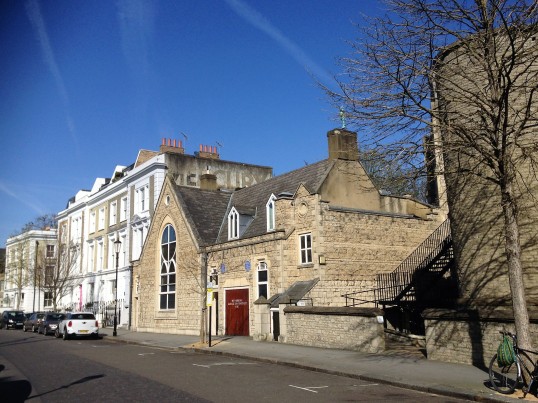 I made a pilgrimage recently to this unassuming building, just off the Portobello Road in London. Why? Because it embodies the spirit and determination of a group of composers and performers who – denied a more conventional platform – created their own space for new music.
I made a pilgrimage recently to this unassuming building, just off the Portobello Road in London. Why? Because it embodies the spirit and determination of a group of composers and performers who – denied a more conventional platform – created their own space for new music.

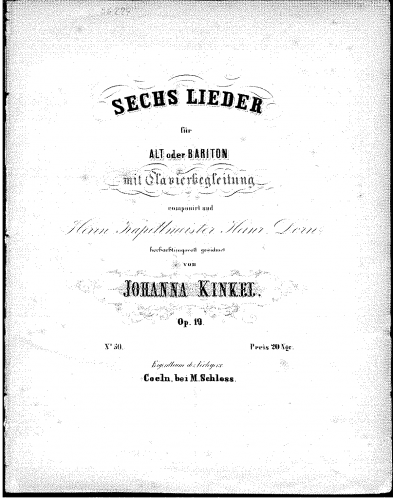

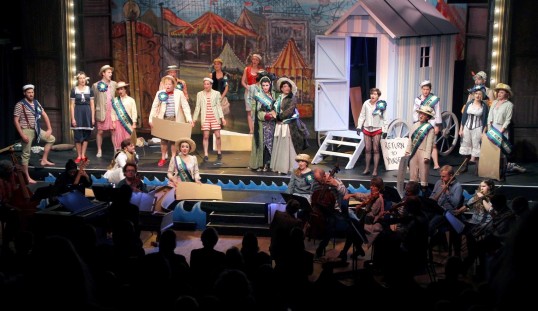
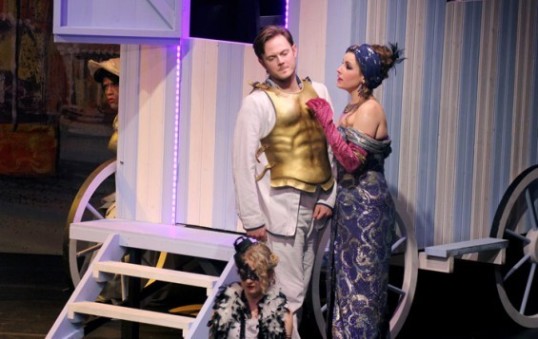
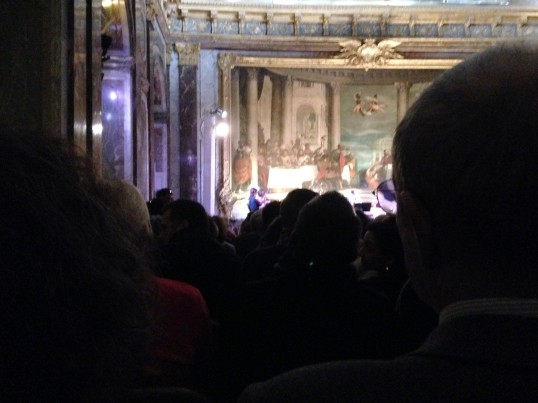
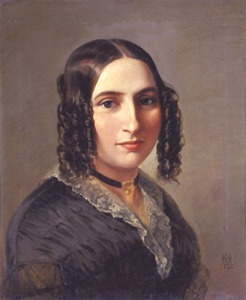

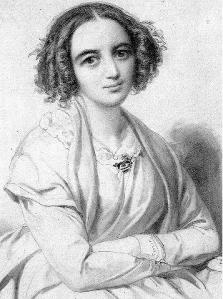






 The motives of her heart aside, Strozzi was, as always, looking for a patron, and therefore the most significant work in the collection is the astonishingly powerful motet for solo voice ‘Mater Anna’, which, of course, honours both the Archduchess and Santa Anna/Saint Anne, mother of Mary, and patron saint of Christian mothers. Scholar Robert Kendrick has noted that Strozzi would have been well aware of the nature of Anna de Medici’s devotion to her namesake saint. At the age of thirty (in other words, very late for the time), the Medici princess had been married to a man of eighteen, and although she did successfully breed three daughters for him, a son remained elusive through a relentless series of miscarriages and stillbirths.
The motives of her heart aside, Strozzi was, as always, looking for a patron, and therefore the most significant work in the collection is the astonishingly powerful motet for solo voice ‘Mater Anna’, which, of course, honours both the Archduchess and Santa Anna/Saint Anne, mother of Mary, and patron saint of Christian mothers. Scholar Robert Kendrick has noted that Strozzi would have been well aware of the nature of Anna de Medici’s devotion to her namesake saint. At the age of thirty (in other words, very late for the time), the Medici princess had been married to a man of eighteen, and although she did successfully breed three daughters for him, a son remained elusive through a relentless series of miscarriages and stillbirths. Here’s what I wonder towards the end of my chapter on Strozzi:
Here’s what I wonder towards the end of my chapter on Strozzi:
